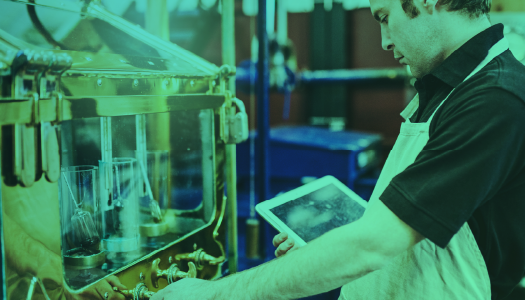The basics of artificial intelligence
Artificial intelligence (AI) expands what you can do through always-evolving machine learning and can help you make better operation decisions and keep your inventory stocked for exactly what you need.
What is AI?
AI is classified as intelligence through machines, or the ability for a computer to complete tasks normally done by humans. AI is just another step in the move to improve efficiency and exactness with the help of non-human intelligence. AI can be broken down further into three types based on capabilities:
- Artificial narrow intelligence (ANI): Sometimes referred to as weak AI, artificial narrow intelligence is AI that specializes in one area. There’s AI that can read faster than the average human, but that’s the only thing it does. Ask it to do something else, and it’ll look at you blankly.
- Artificial general intelligence (AGI): Sometimes referred to as strong AI, or human-level AI, artificial general intelligence refers to a computer that is as smart as a human across the board. Society has yet to fully accomplish AGI on any level, so, at this point, it is theoretical.
- Artificial superintelligence (ASI): Artificial superintelligence ranges from a computer that’s just a little smarter than a human to one that’s trillions of times smarter—across the board.
The four types of AI are based on functionality, including reactive, limited memory, theory of mind and self-awareness.
Why does AI matter?
While you may or may not have AI helping with your maintenance and operations tasks (likely not yet), with more advanced analytics in today’s systems, AI can allow you to make better decisions operationally based on data.
An example is having auto-trigger part reorder points for inventory based on changing market and supply chains, allowing organizations to switch from reactionary to strategic. These use big data to calculate accurate failure thresholds and help you keep inventory stocked for exactly what you need.
These use big data to calculate accurate failure thresholds and help you keep inventory stocked for exactly what you need, without lifting a finger.]
Trends in AI: from a subject matter expert
“Where organizations manually make decisions to optimize their programs, AI will soon learn what criteria lead to optimal outcomes and apply them automatically. We are already starting to see organizations become more intuitive and adaptive to meet the rapidly changing needs of communities.
“Australia, for example, is applying AI to detect road maintenance, pipe serviceability and facility maintenance. In China, where complex road conditions present a significant safety issue, they are looking to AI in the form of training robots. In Redwood, CA they are piloting multiple sensor-based technologies.
“We are able to embed AI along with existing data analysis tools to become much more informed about our resources and capabilities, but humans still provide a key intervention point to filter out good data from bad, and to spot game-changing linkages that defy logic. Together, humans and AI will build and maintain more agile, sustainable cities and systems.”
Ashay Prabhu
VP, Strategic Asset Management, Brightly



